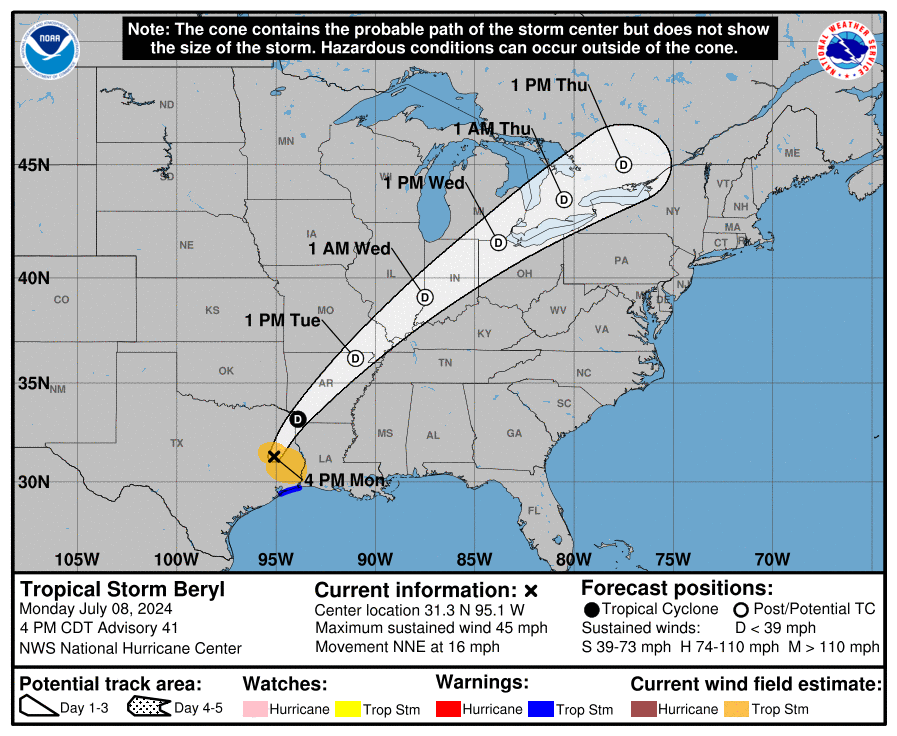
Tropical Storm Beryl continues to wreak havoc on Texas and Louisiana, bringing heavy rainfall, storm surge, damaging wind, and a tornado threat to the region. The storm made landfall in Texas at around 4am CDT, with maximum sustained winds of 80mph making it a Category 1 hurricane. Since then, it has weakened to a tropical storm as it moved inland.
The impact of Beryl’s landfall has been significant, with widespread power outages reported due to strong wind gusts reaching up to 90mph in some areas. Moderate to major coastal flooding has also been reported on parts of the middle and upper Texas coast, with rainfall totals ranging from 6-12 inches in the Houston metro area.
As Beryl’s center continues to track northward through east Texas, heavy rainfall, strong wind gusts, and a tornado threat are expected. The National Weather Service has issued flood watches for eastern Texas, the middle-Mississippi, and lower-Ohio valleys, with an elevated threat of excessive rainfall that might trigger flooding in these areas.
Beryl’s remnants will eventually merge with a front and spread toward the Mississippi and Ohio valleys, Great Lakes, and Northeast through midweek, helping to enhance heavy rainfall in those areas. This could lead to localized heavier amounts of rain, potentially triggering flooding in some spots.
In terms of wind threats, tropical storm warnings remain in effect for parts of the upper Texas coast and southeast Texas, with sustained winds expected to range from 40-73mph and stronger gusts possible. This could cause more power outages and knock down trees, including in the Houston metro area.

The storm’s history is just as impressive as its current impact. Beryl began as Tropical Depression Two on June 28 and rapidly intensified into a Category 4 hurricane by June 30, becoming the strongest June hurricane on record in the Atlantic Basin. It went on to make landfall over Grenada, causing widespread devastation, before making additional landfalls in Mexico.

As Beryl continues to affect Texas and Louisiana, residents are advised to stay informed through local news sources and emergency management officials.
